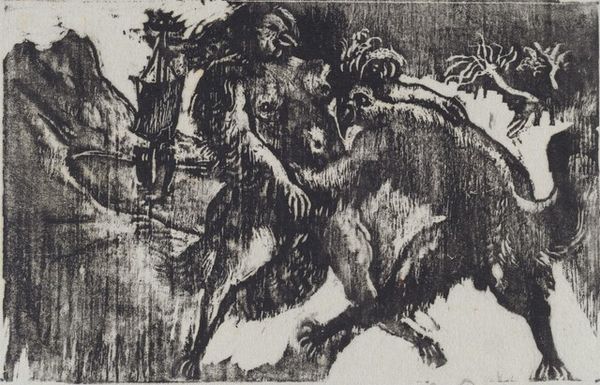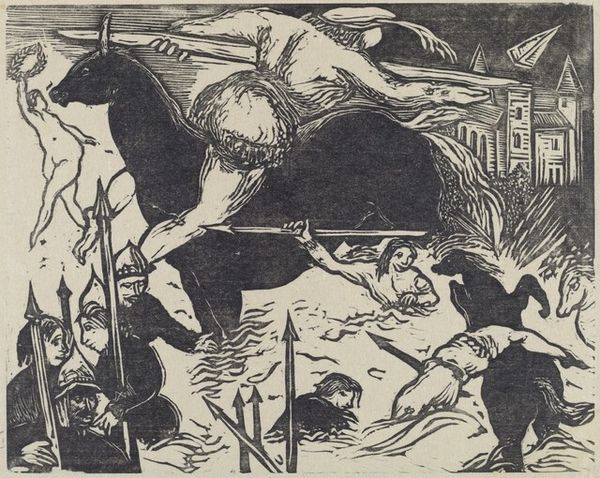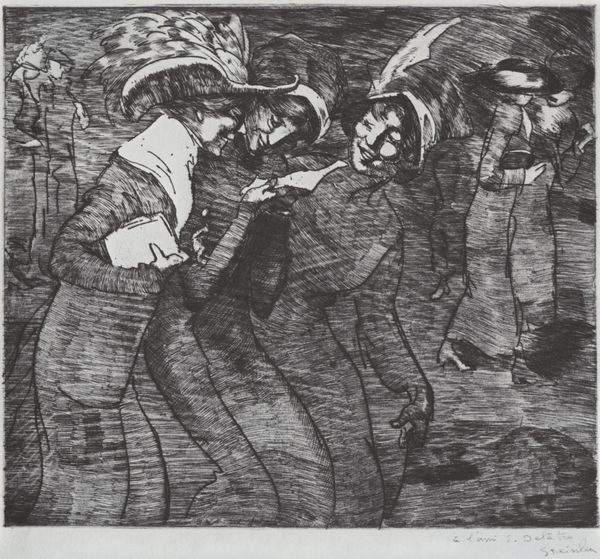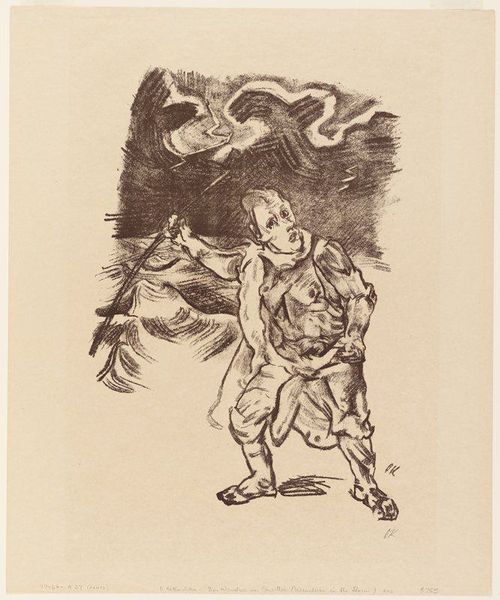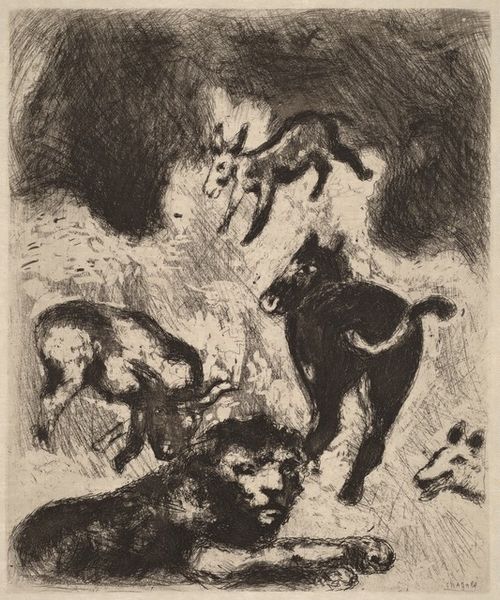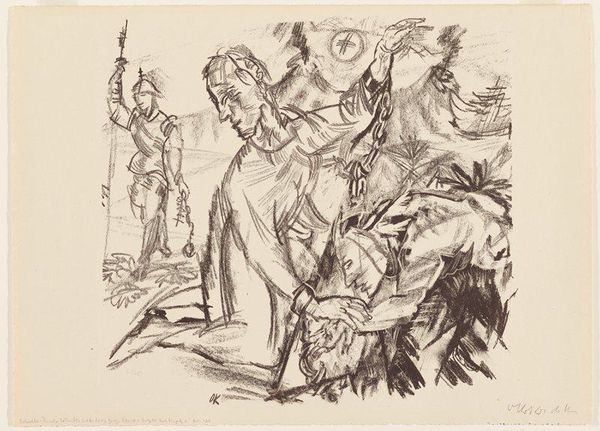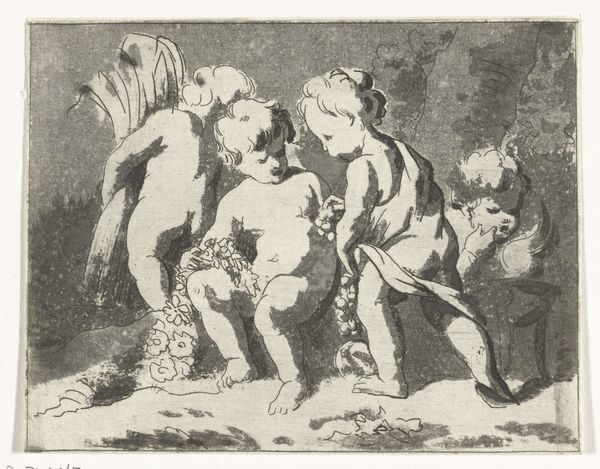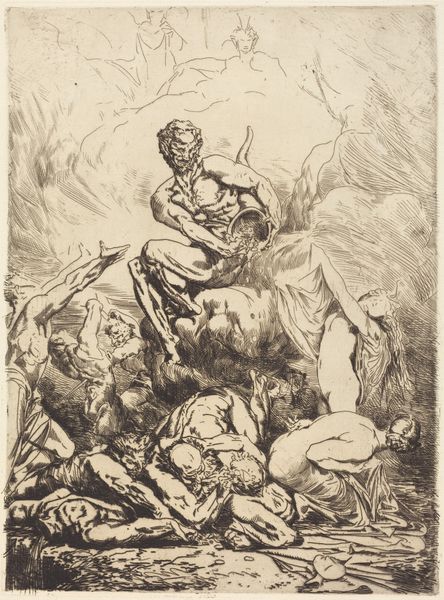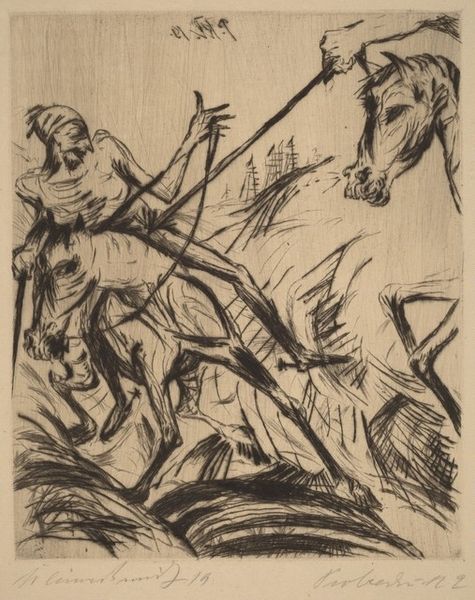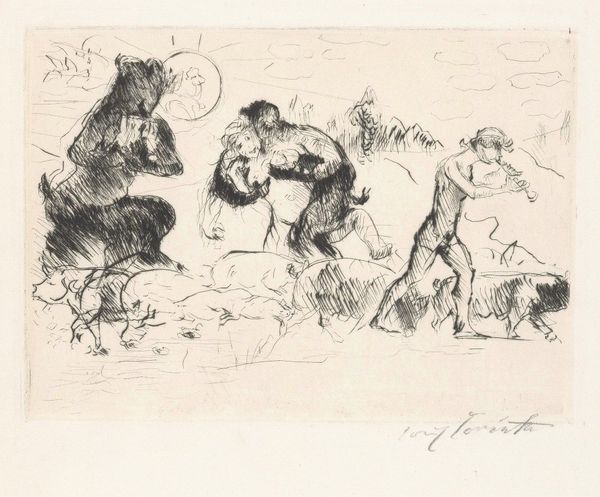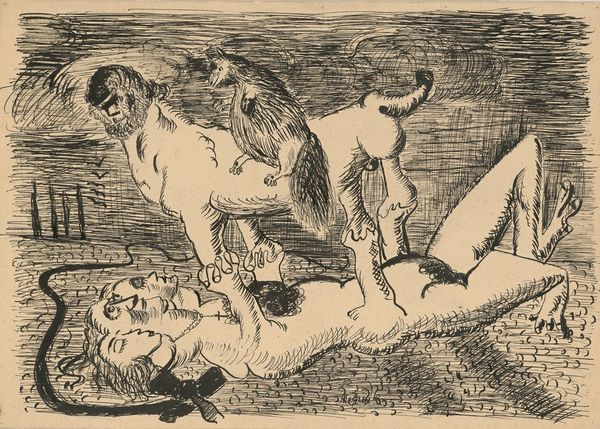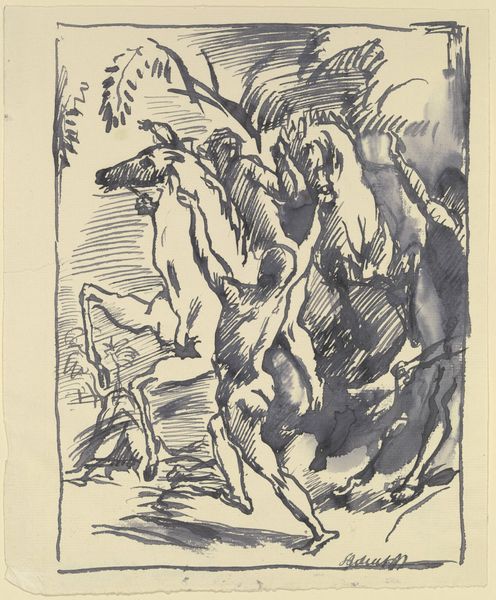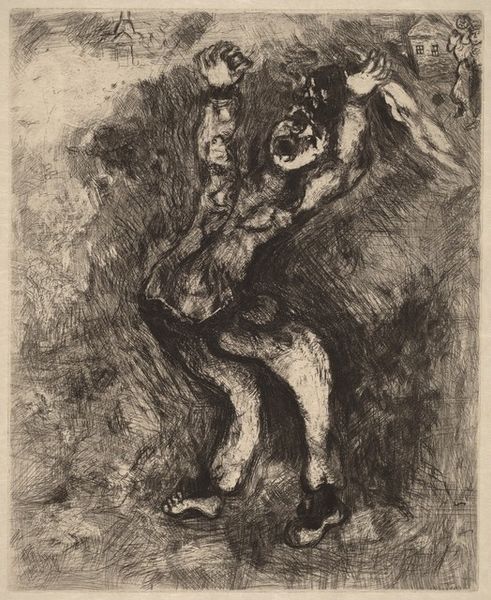
drawing, print, etching
#
drawing
#
narrative-art
# print
#
etching
#
landscape
#
figuration
#
line
Copyright: National Gallery of Art: CC0 1.0
Curator: Bernard Reder's etching, titled "Gargantua au Puy, recu par M. Verdier," made around 1942, presents an interesting study in narrative line and figuration. Editor: The contrast is immediately striking, isn't it? We have this elaborately dressed rider on horseback looming large against the thin, almost gaunt figure gesturing towards what looks like a crowd. It's quite theatrical, very expressive. Curator: Reder's focus here isn't so much on surface beauty as it is on the process, the very labor involved in bringing forth these forms. Etching as a medium—acid biting into metal, the careful application of ink. I wonder what the printmaking conditions were like in 1942? Paper itself would have been a precious material. Editor: You're right; the line carries the weight of the story, yet the imagery… It feels almost dreamlike. Gargantua, a figure of grotesque appetite, meets Monsieur Verdier. Think of the symbolism: The mounted figure often signifies power, authority. But consider the vulnerability of the standing figure. Curator: I see that vulnerability but I think Reder's choice of etching really underlines the democratic potential of printmaking. While the imagery references historical narratives and established power, the medium itself makes art accessible, disrupting traditional boundaries of value. Editor: But what is Reder telling us with this juxtaposition? The town on the hill in the background and this whole scene—do you read it as mockery, reverence, or something else? Perhaps the vulnerability you were seeing represents exposure and welcome for Verdier as much as intimidation by Gargantua's force. Curator: That reading acknowledges that context of reception that changes how material culture gains value through active use. That shifts from Reder's labor to the way its meaning is performed by viewers. Editor: It makes me wonder how deeply Reder intended for the audience to go in their decoding of these signs or symbols when constructing this scenario. Curator: Considering those themes, this artwork encourages us to look beyond the depicted scene. It beckons us to understand it as not just a finished image but a fragment of our understanding. Editor: Absolutely, seeing beyond is always so rewarding.
Comments
No comments
Be the first to comment and join the conversation on the ultimate creative platform.
